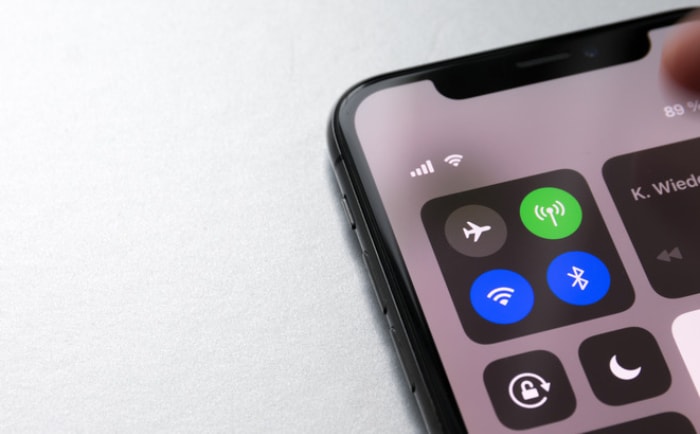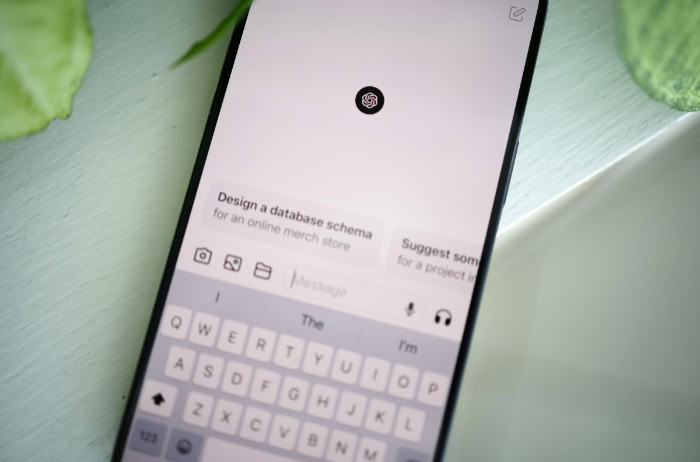What Is Data Roaming? What to Know Before You Travel

Stepping off the plane in a new country and instantly connecting to the internet feels like magic; that convenience is data roaming. This service allows your phone to use a partner network for mobile data when you are outside your home carrier's coverage area, most often during international travel.
While it keeps you connected for maps, messaging, and updates, it can also lead to surprisingly high bills if you are not careful. Managing your connection is essential for staying online and protecting your budget.
What Is Data Roaming?
Data roaming allows your smartphone or mobile device to access the internet using a partner carrier's network. This happens when you travel outside the geographical footprint of your own mobile provider.
Your carrier has agreements with other network operators, creating a seamless handoff that keeps you online. This service is distinct from using data on your domestic network, where your device connects directly to your carrier's own towers under the terms of your standard mobile plan.
Roaming is specifically for situations where your home network is unavailable.
Data Roaming Versus Voice and SMS
Many modern smartphone activities depend entirely on a data connection. Streaming music, using navigation apps, browsing websites, and sending messages through apps like WhatsApp or iMessage all consume data.
These services are separate from traditional cellular functions like making a standard voice call or sending a classic SMS text message, which use a different part of the network. While traveling abroad, how you communicate matters.
A video call on a messaging app will use your roaming data, but a conventional phone call will be billed as a roaming voice minute, often at a different rate.
Domestic Versus International Roaming
The distinction between domestic and international roaming is important because it directly affects your costs. International roaming occurs when you use your phone in a different country.
This is the most common form of roaming travelers experience and is typically associated with extra charges, either through pay-as-you-go rates or special travel passes. Domestic roaming happens when you are still within your home country but in an area where your carrier lacks service, forcing your phone to connect to a partner network.
In many countries, particularly large ones with spotty rural coverage, domestic roaming is often included in mobile plans at no additional cost, though data speeds or usage might be limited. Always confirm your plan's specific terms before assuming coverage is free.
How Roaming Works

Connecting to a network in another country feels automatic, but it relies on a complex, coordinated process between your mobile provider and a local partner. This backend operation involves authenticating your device, routing your internet traffic, and ensuring the carriers can settle the costs.
The entire system is designed to provide a continuous connection, handling the technical logistics so you can use your phone without interruption.
Network Handoff and Authentication
When you arrive in a new location and turn on your phone, it immediately detects that it is no longer on its Home Public Mobile Network (HPMN). The device then scans for available signals and attempts to connect to a Visited Public Mobile Network (VPMN), which is a local carrier that your home provider has a roaming agreement with.
Once your phone selects a partner network, the VPMN contacts your HPMN to authenticate your device. This process validates that you are an active subscriber with a plan that permits roaming.
After your home network confirms your eligibility, the visited network grants you access for calls, texts, and data.
Data Transport and Billing Settlement
When you use mobile data while roaming, your internet traffic is not handled exclusively by the local network. Instead, the data is typically routed from the VPMN back to your home network’s infrastructure through secure, private links like the GPRS Roaming Exchange (GRX) or an IP Packet Exchange (IPX).
Your home carrier then connects your request to the public internet. This routing allows your provider to track and manage your usage.
The visited network logs your data consumption and sends these records to your home carrier, which then settles the wholesale charges. Finally, your provider bills you based on the roaming rates or travel pass associated with your account.
Performance and Connection Quality
Your roaming experience can differ from the service you get at home. Several factors influence connection speed and reliability.
The most critical is the coverage and quality of the partner network in your specific location. The terms of the roaming agreement also play a role; for example, your carrier might only have a deal for 4G access, even if the local partner offers a faster 5G network.
The available technology, whether it is 3G, 4G, or 5G, will naturally limit your data speeds. Some carriers may also prioritize traffic from their own subscribers over that of visiting roamers, which can lead to slower performance during peak times.
Costs and Pricing
The price of data roaming is often the biggest concern for international travelers, as unexpected charges can quickly add up. Mobile carriers use several pricing models, from expensive default rates to more manageable travel packages.
Understanding how you will be billed is essential for keeping your mobile expenses under control while you are abroad.
Why Roaming Can Be Expensive
Without a specific travel plan, your phone will likely default to standard pay-as-you-go roaming rates. Carriers charge for this on a per-megabyte basis, and the cost can be extremely high, turning simple activities like browsing social media into a costly expense.
Providers also group countries into different pricing zones. Roaming in a neighboring country might be relatively affordable, while traveling to a more distant destination could place you in a zone with much higher fees.
This variability means costs can differ dramatically from one trip to the next, even with the same carrier.
Plans and Add-Ons
To offer more predictable costs, carriers provide roaming plans and add-ons. These come in various forms, such as daily, weekly, or monthly travel passes that give you a set amount of data for a fixed price.
A daily pass, for example, might offer 24 hours of data usage for a flat fee, which is far more economical than standard per-megabyte rates. Opting for one of these packages is the most effective way to cap your expenses and prevent a shockingly high bill upon your return.
Estimating and Checking Rates
Before you depart, you should always check your carrier’s roaming policies. Visit their website or use their mobile app to review the rates for your destination.
Pay close attention to which zone your destination country is in and what the associated charges are. If you purchase a travel pass, look for any fair-use limits or data caps, as some “unlimited” plans may slow your connection speed after a certain threshold.
It is also wise to understand how your carrier handles Multimedia Messaging Service (MMS), since sending a picture via text message can sometimes trigger separate charges in addition to consuming data.
Controls and Settings

Managing your connectivity while traveling involves using a combination of your phone’s settings and your carrier’s services. By taking a few preventative steps, you can gain full control over when and how your device uses data abroad.
Turning Roaming On and Off
The most direct way to control roaming is with a dedicated toggle on your smartphone. You can typically find this option in your device's settings menu, under “Cellular” or “Mobile Data.”
By default, it is best to keep data roaming turned off to prevent your phone from automatically connecting to a partner network and incurring charges. You should only enable it after you have confirmed a roaming plan is active on your account or when you are ready to use data at pay-as-you-go rates.
Turning it on allows for data access, while turning it off blocks all mobile data except on Wi-Fi, without affecting your ability to make calls or send texts.
Managing Data Usage
Even with a roaming plan, conserving data can help you stay within your limits and avoid overage fees. Before you travel, download maps, music, and videos for offline access.
While abroad, go into your phone’s cellular settings to see which apps consume the most data and consider disabling background data refresh for non-essential applications. Most smartphones have built-in data usage monitors that let you track your consumption in real-time.
Resetting this tracker at the start of your trip can help you monitor how much data your roaming plan has used.
Using Carrier Safeguards
Your mobile provider offers several tools to protect you from unexpected roaming costs. Before you leave, contact your carrier or log into your account to verify that international roaming is enabled for your line.
This is also the best time to purchase a travel pass or add-on that suits your trip's length and your expected data needs. It is also a good idea to confirm which local networks at your destination are partnered with your carrier.
Connecting to a non-partner network could result in charges that are not covered by your roaming package.
Alternatives to Roaming
While data roaming offers undeniable convenience, it is not always the most cost-effective or practical way to stay connected abroad. Several other options are available, each with its own advantages depending on your travel style, budget, and data needs.
eSIM or Local SIM
One of the most popular alternatives is to use a local SIM card or an eSIM for your destination. A physical local SIM card can be purchased upon arrival at airports or convenience stores.
It gives you a local phone number and access to that country's mobile data rates, which are almost always cheaper than roaming. An eSIM is a digital SIM that you can download and activate on a compatible device before you even leave home.
This option offers great flexibility, allowing you to purchase data-only plans for specific regions or countries. Both are excellent choices for longer trips or for travelers who anticipate heavy data use, as they provide predictable pricing and avoid the risk of high roaming charges.
Wi-Fi Use
Relying on Wi-Fi is a common strategy for avoiding data charges altogether. It is often available for free or for a small fee in hotels, cafes, airports, and public squares.
For light internet users, this can be a perfectly viable way to check emails, send messages, and do some light browsing. However, Wi-Fi is not always practical.
Its availability can be inconsistent, especially outside of major cities, and the connection quality can vary. More importantly, using public Wi-Fi networks poses security risks.
You should avoid accessing sensitive information, like banking or personal accounts, on unsecured public networks.
Data-Only Roaming Packages
For travelers who primarily need internet access and do not require traditional voice and SMS services, data-only packages can be a great middle ground. Some mobile carriers and third-party providers offer these specialized plans, which provide a set amount of data for use abroad without including costly voice minutes or texts.
This can be a more affordable option than a comprehensive roaming pass. With a data-only package, you can still make calls and send messages using internet-based apps like FaceTime, Skype, or WhatsApp, giving you the connectivity you need at a lower price point.
Conclusion
Data roaming delivers the convenience of immediate internet access as soon as you arrive in another country, eliminating the hassle of finding Wi-Fi or swapping SIM cards. This seamless connectivity, however, presents a financial trade-off.
Without a specific travel plan and active management of your device settings, default roaming can result in unexpectedly high costs. The challenge is to balance the ease of instant connection with proactive controls to prevent a large bill.
The most suitable method for staying connected will vary with each trip. For short visits where convenience is the top priority, purchasing a roaming pass from your carrier is an excellent choice.
For longer stays or for travelers who need significant amounts of data, an eSIM or a local SIM card typically provides better value and more predictable costs. If your internet needs are minimal, simply using trusted Wi-Fi networks at your accommodation and in public areas may be all you need.
Your final decision should be based on your budget, your requirement for continuous coverage, and how comfortable you are with managing your device's network settings.


